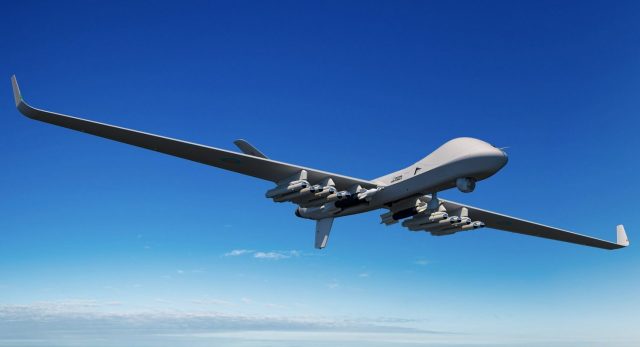Today, foreign armies are armed with numerous categories of conventional air-to-ground munitions (AGM) of the air-to-ground class. In the first part of the article , a group of guided aerial bombs is considered.This publication is devoted to air-launched missiles.
Air-launched cruise missiles
Conventional air-launched cruise missiles combine the high payload capacity of aerial bombs with a significantly longer flight range, as well as the ability to change course and altitude throughout the flight. Their very high range of destruction allows bombers and fighters to stay far beyond the enemy's air defense zones, delivering accurate strikes on particularly valuable targets.
JASSM
The AGM-158 Joint Air-to-Surface Standoff Missile (JASSM) was originally developed by Lockheed Martin for the US Air Force and Navy. Its production began in 2001. The KRVB, equipped with a penetrating warhead (warhead) weighing 450 kg, is designed to hit stationary and mobile targets, including objects with moderate protection or buried targets. To reduce the detection range of enemy air defenses, low-visibility technology is used, allowing JASSM to fly at higher altitudes than many cruise missiles.
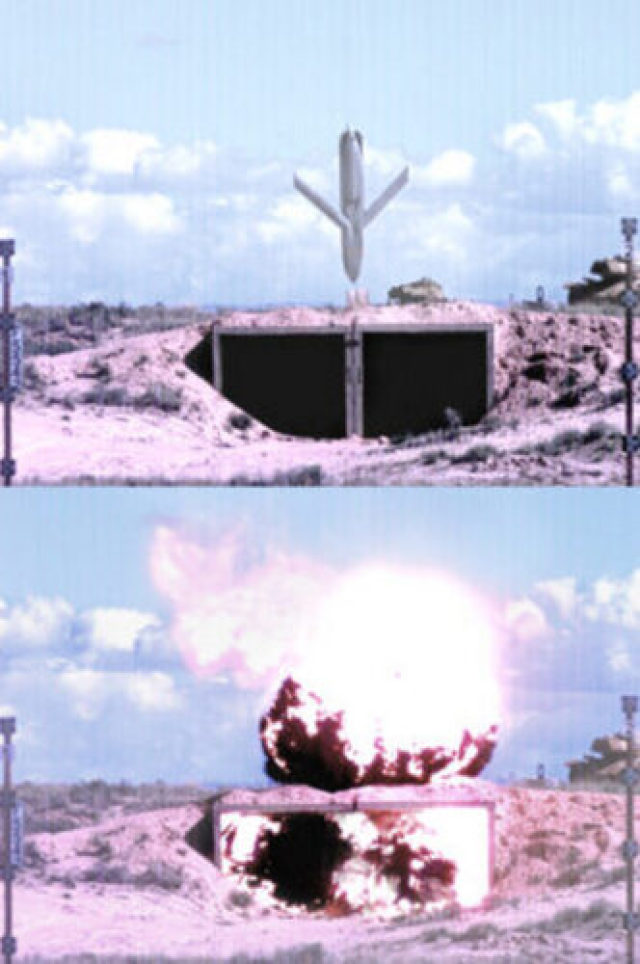
Testing of the JASSM CRVB on a reinforced target. Before impact and at the earliest stage of warhead detonation.
JASSM continues to improve. The subsonic air-launched missile uses GPS/INS navigation and a terminal homing head (homing) in the infrared range (IIR). A jam-proof GPS receiver is currently being developed. The basic version of the AGM-158A has a range of about 370 km. The AGM-158B JASSM-ER version appeared in 2014 with a more efficient engine and an increased firing range of up to 900 km. Production of the AGM-158A ceased in 2016 in favor of the JASSM-ER variant. The development of the AGM-158B-2 "extreme range" (JASSM-XR) began in 2018, and mass production (LRIP) in 2021. TSA deliveries to the troops are expected in early 2024. The XR variant more than doubles the effective range of the munition to about 1,900 km.
The next iteration is a proposed new variant of JASSM (JASSM–NV), which is designed to increase survivability and lethality when operating in difficult conditions against complex defenses. The US Air Force signed a non-competitive development contract with Lockheed Martin in October 2022. It is reported that the NV modification, compared with the current version of the ER, will receive "additional features". However, most of the details remain classified.
You can find out more about the details of the development of the AGM-158C anti-ship version of the KRVB here .
TAURUS KEPD 350[/b]
The TAURUS KEPD 350 is an air–launched cruise missile designated by the manufacturer as an "Automatic general-purpose system with unitary and cluster equipment adaptable to the target" / "Kinetic penetrating weapon of destruction" (Target Adaptive Unitary & Dispenser Robotic Ubiquity System / Kinetic Energy Penetration Destroyer). The ammunition is manufactured by Taurus Systems GmbH, a joint venture between MBDA Deutschland GmbH and SAAB Dynamics.
The KEPD 350 KRVB flies at high subsonic speeds (mach 0.6-0.95) and reaches a flight range of 500 km. The missile has stealth characteristics, including a radio-absorbing coating and curved air intakes, which, combined with terrain-based flight tactics and electronic countermeasures, provide a high penetration potential against dense air defense networks. To achieve high accuracy of defeat, the Tri-Tec multi-mode navigation system uses GPS-supported INS, image-based navigation (IBN) and terrain navigation (TRN). On-board sensors are integrated with databases and link to them for continuous monitoring of the location and trajectory of the munition as it approaches pre-programmed waypoints on the route to the target, which makes it independent of GPS access.
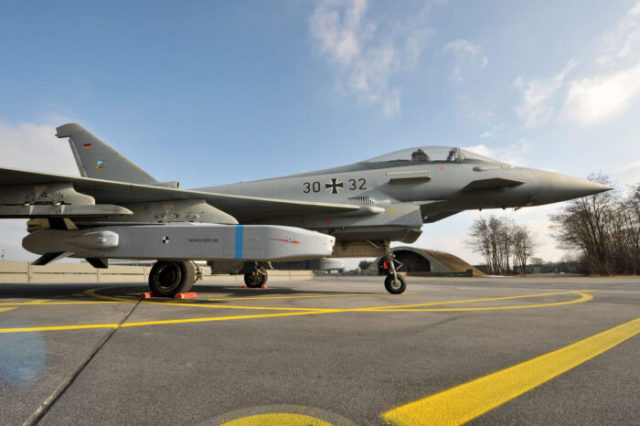
TAURUS KEPD 350 on a Eurofighter fighter of the German Air Force. KRVB is certified for Eurofighter Typhoon, Gripen, Tornado, F-15 and F/A-18 fighters
The terminal attack phase is determined by recognizing the target image with reference to the on-board visual database. The 1400 kg TSA carries a 480-kilogram tandem warhead "MEPHISTO" (MEPHISTO). The warhead is equipped with an initial cumulative precursor charge (understood as an anti-tank (high-explosive) type) capable of hitting strong and deeply buried targets. The auxiliary warhead consists of a delayed-action main charge packed inside the body of a penetrating kinetic penetrator.
According to SAAB, the KEPD 350 is the only air-launched missile that can be programmed to detonate the main charge on a pre-selected target floor, which is achieved through layer counting and void detection technology. Alternatively, the KEPD 350 variant can be configured for aerial demolition to destroy important ground and area targets, including large radar installations, bridges and runways. The KRVB entered service with the German Air Force in 2005, followed by Spain and South Korea. The modular architecture of the KEPD 350 allows for regular updates of key components.
Storm Shadow/SCALP[/b]
The British-French Storm Shadow missile defense system (or in French "Long-range Autonomous System – general use" / Système de Croisière Autonome à Longue Portée – Employi Général, SCALP–EG) entered service in 2003 and is used in nine different conflicts, including the ongoing war in Ukraine.
According to experts, it has demonstrated a high level of success in hitting various targets, including airfields, bridges, bunkers and moored Navy ships. The combination of stealth design and flight taking into account the terrain reduces the risk of interception. According to the manufacturer MBDA, Storm Shadow flies at a speed of Mach 0.8 and has a firing range of more than 250 km. The navigation system uses INS, GPS and TRN. Near the pre-programmed coordinates, the missile floats up to capture the target using an IR sensor in combination with an on-board image database. In the last steep dive, an accurate strike is achieved with minimal collateral damage. Detonation options for a tandem warhead weighing about 450 kg include modes of air explosion, impact or penetration (with delay).
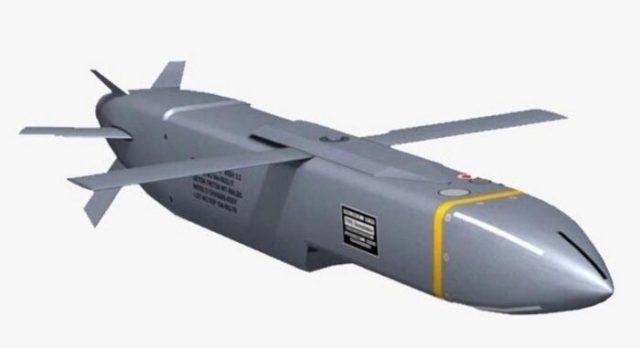
KRVB Storm Shadow in flight
In 2017, the United Kingdom and France signed a contract with MBDA to modernize Storm Shadow in the middle of its service life, adapting the system to counter emerging threats and extending the life of the munition until 2032. In addition to this modification, the KRVB has also received a software update that allows it to hit targets located at an altitude of up to 4000 m above sea level.
France and the United Kingdom jointly launched the Future Cruise/Anti-Ship Weapon (FC/ASW) program in 2017, aimed at replacing the Storm Shadow/SCALP anti-ship missiles, as well as Harpoon and Exocet anti-ship missiles. In June 2023, Italy joined the project. After the completion of the concept development phase, preparatory work began in February 2022. According to MBDA, two complementary concepts of air-launched missiles are being evaluated, namely "the concept of subsonic stealth and the concept of supersonic high maneuverability." It is currently unclear whether the MBDA will eventually be one dual-use weapon or two specialized missiles. The FC/ASW TSA is expected to enter service in the early 2030s.
High-precision guided air-launched missiles
High-precision guided air-launched missiles with conventional drive are mainly powered by solid-fuel engines, unlike KRVB air engines. They are smaller and cheaper than CRVS, and are produced in much larger quantities. Most of them have a short or medium firing range, although configurations with a longer range are being implemented. Unlike CRVS, they can be used by helicopters and fixed-wing aircraft, as well as unmanned aerial vehicles (UAVs).
AGM-114 Hellfire / JAGM[/b]
One of the most common high-precision SD is the AGM-114 Hellfire, which has been purchased by about 30 countries. Since its initial introduction in 1982, the Lockheed Martin-produced subsonic Hellfire missile has undergone a number of improvements.
Depending on the variant, the 1.6 m long TSA has a mass of 45-49 kg and reaches a maximum firing range of 8 km. The two most important variants in the current arsenal are the AGM-114L Longbow (produced in 1995-2005) and the AGM-114R Romeo (produced since 2012). The Longbow is a shot–and-forget weapon for hitting targets beyond the line of sight (BLOS). To detect a target, the missile uses a millimeter radar sight (MMW) and retains combat effectiveness in adverse weather conditions and when the enemy is jamming. Tandem high-explosive warhead can hit heavy tanks.
The Romeo variant uses a semi-active laser guidance system (SAL), which requires the target to be illuminated by a carrier aircraft or a third party. The AGM-114R variant replaced several previous modifications and carries a multi-purpose tandem high-explosive warhead with a fragmentation sleeve capable of hitting various classes of targets, including hard, soft and closed. The main improvement of the AGM-114R is the three-axis inertia measurement Unit (IMU), which allows the missile to maneuver and attack targets from the side or from behind, without requiring the carrier aircraft to be positioned behind the target.
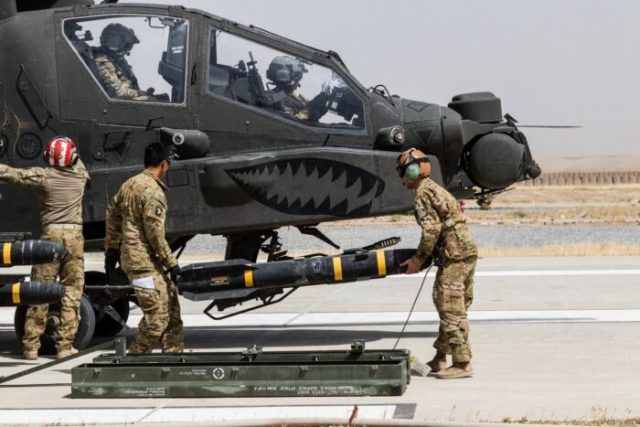
The AH-64D/E Apache attack helicopter carries 16 AGM-114 Hellfire missiles
A special variant designated AGM-114R9X has been developed for targeted anti-terrorist strikes. In order to significantly minimize the risk of collateral damage, the ‘R9X’ does not carry an explosive warhead. Upon impact, the munition releases six long blades that dismember any targets that have survived the kinetic energy of a missile hit. These blades gave rise to the unofficial nickname "ninja rocket". The existence of these weapons was first reported by The Wall Street Journal, which described the first use against targets in Syria in 2017.
The planned successor to the Hellfire family is the single air-to-surface missile AGM-179, or JAGM. This variant is based on the AGM-114R missile body, retains the Romeo warhead and is equipped with a new GOS with a multi-mode guidance system combining MMW and SAL capabilities. Improved all-weather guidance capabilities, the "shoot-forget" principle promise greater versatility and combat effectiveness against stationary or moving targets in all operational scenarios, as well as enhance the missile's ability to overcome countermeasures.
Production began in 2018, and full–scale production in 2022. The new weapons are coming into service gradually, the first to be equipped with the AH-1Z of the US Marine Corps and the Army AH-64E Apache. In November 2022, Lockheed Martin tested an improved version of the JAGM-MR (medium range). The modification doubles the effective range of the JAGM from 8 km to 16 km and expands the guidance system by adding an IIR sensor.
The Brimstone family[/b]
The Brimstone family of air-launched missiles, developed by MDBA UK, entered service with the Royal British Air Force in 2005. The Brimstone 2 model entered service in 2016. The next Brimstone 3A (formerly known as the Brimstone 2 Capability Sustainability Program (CSP), aimed at extending service life beyond 2030) should enter service in the spring of 2024 due to manufacturer delays.
Brimstone 2 is a 1.8 m long and 50 kg rocket. The munition is equipped with a solid-fuel engine, flies at a speed of Mach 1.3 and has a firing range of 60 km when launched from an airplane. The weapons are optimized for armored and protected targets, including maneuvering tanks and armored vehicles, as well as bunkers. Up to three missiles can be mounted on each underwing armament installation. Depending on the type of aircraft, this allows you to use up to 18 units in one flight.
Brimstone 2 can operate in three targeting modes: SAL only (against static targets with limited radar cross-section), SAL plus MMW (for fast-moving targets and for distinguishing targets in a busy environment) and fully autonomous MMW (for simultaneously hitting multiple targets in the "shot-forget" mode). The Brimstone 2 model is equipped with a "man in a loop" function that allows you to abort a mission or redirect ammunition at the last minute, as well as a rocket engine and a warhead compatible with insensitive ammunition (IM). A tandem high-explosive warhead weighing 6.3 kg can be activated using shock or delayed modes, an air explosion or a non-contact fuse. According to the UK Ministry of Defense, Brimstone demonstrated accuracy and reliability of "over 90 percent" during combat operations, including more than 98% during the 2011 intervention in Libya.
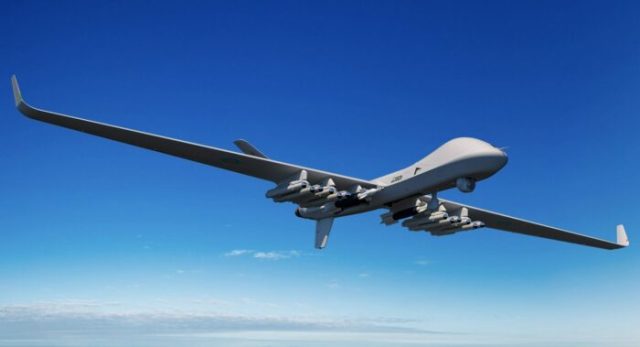
High-precision Brimstone 2 UAVs on RAF Protector RG Mk1
The upgraded version of the Brimstone 3A conducted its first successful test launch in March 2019. It includes the latest dual-mode SAL/MMW homing system, an IMU based on a microelectromechanical system (MEMS), an improved autopilot, and an improved battery. According to MBDA, Brimstone 3 also includes significant memory and processor upgrades to "make the rocket look promising." The cabin crew will be able to determine the flight path, angle of attack and angle of collision in advance. This will ensure the accurate defeat of targets moving at speeds up to 110 km /h.
Going beyond Brimstone 3A, in 2021 MBDA announced the integration of a major software update, which will result in the Brimstone 3B variant. In the UK Ministry of Defense's July 2022 report, Option 3B is listed as being at the "evaluation and demonstration" stage. According to a February 2022 report, the integration of this variant with British Apache helicopters has been canceled, but it will be integrated into the Typhoon FGR4 fighter and the Protector RG Mk 1 UAV, with the former selected as the head platform for the Brimstone 3B. This version of the missile was also offered to the Defense Department as part of the British combat group Organic Anti-Armour (BGOAA) program, which aims to replace some outdated types of guided anti-tank weapons based in the UK.
To be continued...
Based on the materials of the resource euro-sd.com
